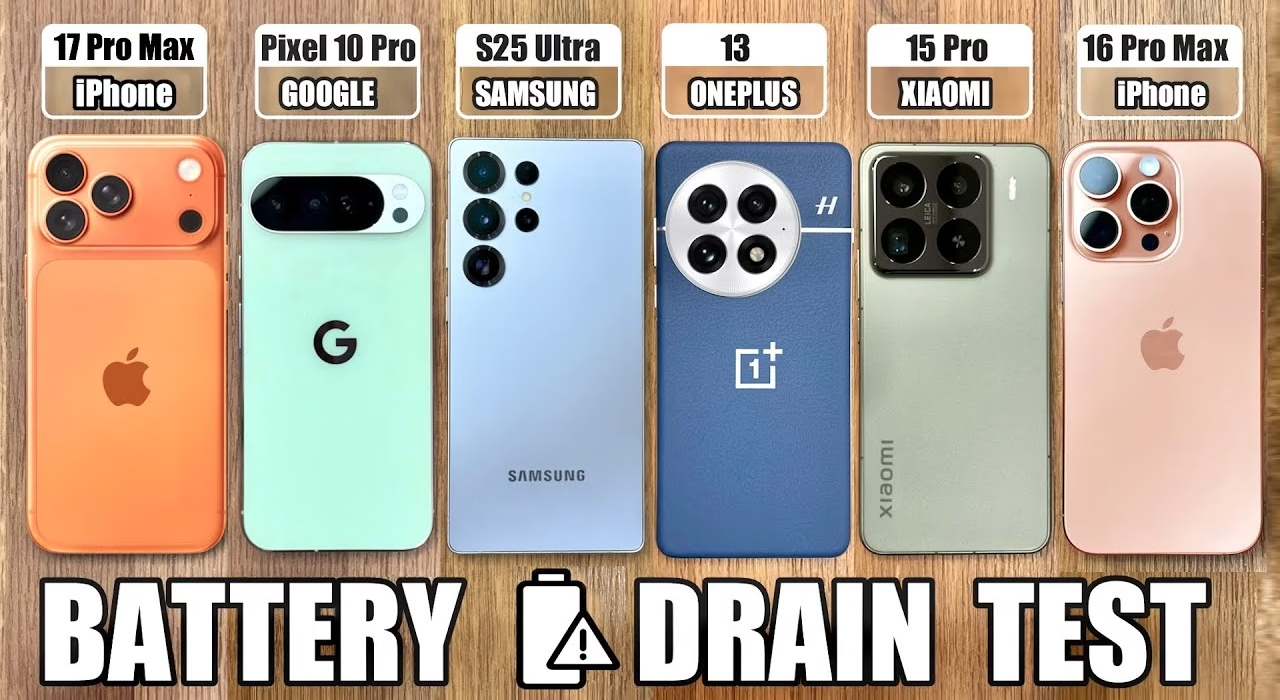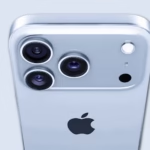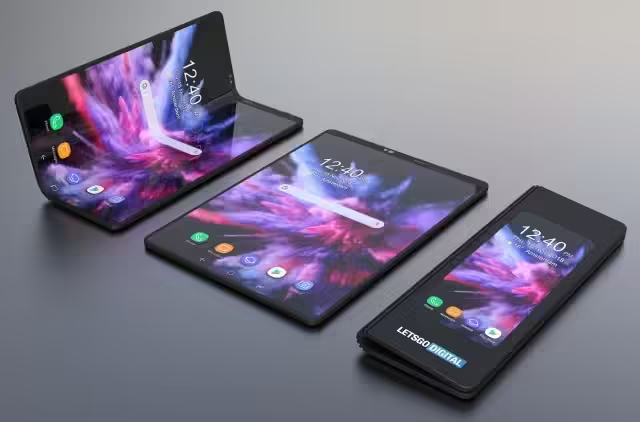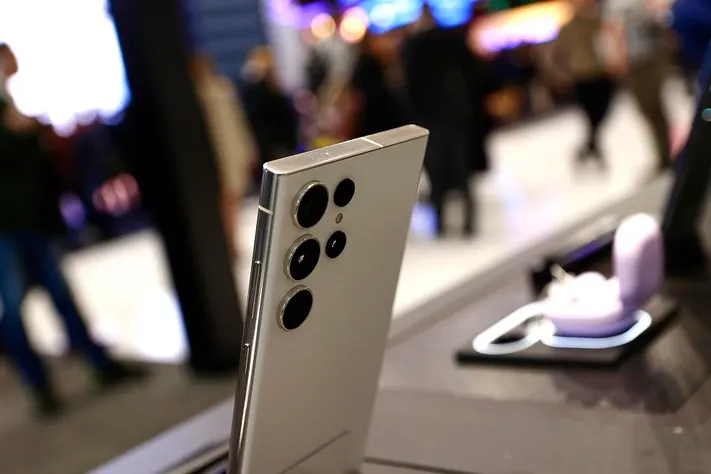Xiaomi 17 Pro Max vs iPhone 17 Pro Max: The Ultimate 2025 Flagship Battle
Estimated reading time: 8 minutes
Key Takeaways
- The **Xiaomi 17 Pro Max** and **iPhone 17 Pro Max** are set to be dominant flagship smartphones in 2025, each targeting the premium market segment.
- This comparison focuses on critical user-centric aspects, with a special emphasis on **Xiaomi 17 Pro Max vs iPhone 17 Pro Max battery life**.
- Key areas examined include design, display technology, processing power, camera capabilities, battery endurance, and overall value.
- Xiaomi is expected to push boundaries with its innovative dual-screen setup and massive battery, while Apple aims for refinement and ecosystem integration.
- Both devices are poised to feature cutting-edge processors and advanced AI capabilities, setting new benchmarks for mobile performance.
Table of contents
- Introduction
- Key Takeaways
- Table of Contents
- Design and Display: A Tale of Two Approaches
- Performance: Power Under the Hood
- Camera Prowess: Capturing Your World
- Battery Life: The Ultimate Differentiator?
- Price Comparison and Value Proposition
- Final Verdict: Which Flagship Reigns Supreme?
- Frequently Asked Questions
Introduction
The smartphone market is perpetually on the cusp of innovation, and as we look towards 2025, two titans are poised to redefine the premium experience: the **Xiaomi 17 Pro Max** and the **iPhone 17 Pro Max**. These devices represent the pinnacle of mobile technology, engineered for users who demand nothing but the absolute best. For enthusiasts and discerning consumers alike, the anticipation for these flagships is palpable. This comprehensive comparison aims to dissect their offerings, empowering you to make an informed decision. While numerous factors contribute to a smartphone’s appeal, we will place a significant emphasis on **Xiaomi 17 Pro Max vs iPhone 17 Pro Max battery life**, a critical element for sustained user experience. We’ll delve into their design philosophies, display technologies, raw performance metrics, camera capabilities, and of course, their expected pricing. These devices aren’t just incremental updates; they are anticipated to be benchmarks in their own right, setting new standards for what a flagship smartphone can achieve, as evidenced by early industry observations [Source: Gadgets360, GSM Arena, Penbrief].
Design and Display: A Tale of Two Approaches
When it comes to design, the Xiaomi 17 Pro Max and iPhone 17 Pro Max take distinctly different paths, each catering to varied user preferences. The Xiaomi 17 Pro Max is rumored to embrace a dual-screen philosophy, as detailed in the Xiaomi 17 Pro Max dual screen review. This innovative approach would feature a primary 6.9-inch display, complemented by a secondary 2.9-inch cover display with a resolution of 976×596 pixels. The utility of this secondary screen lies in its ability to provide quick access to notifications, control media playback, and enable multitasking without needing to open the main display. This could significantly impact user interaction and, potentially, battery consumption.

In contrast, the iPhone 17 Pro Max is expected to continue Apple’s tradition of sleek, minimalist design, focusing on a single, premium 6.9-inch OLED panel. This display is anticipated to boast a sharp resolution of 1320×2868 pixels, equating to a dense 460 PPI, promising exceptional color accuracy and fluidity. The divergence in design is further emphasized by the materials and aesthetics, with Xiaomi potentially exploring more adventurous form factors [Source: Penbrief] compared to Apple’s refined, unibody construction.

Here’s a comparative look at their display specifications:
| Feature | Xiaomi 17 Pro Max | iPhone 17 Pro Max |
|---|---|---|
| Main Display | 6.9-inch, 1200×2608 | 6.9-inch, 1320×2868 |
| Cover Display | 2.9-inch, 976×596 | – |
| Pixel Density | 416 PPI | 460 PPI |
| Refresh Rate | (Not specified; likely ≥120Hz) | (Not specified; likely 120Hz) |
Performance: Power Under the Hood
At the heart of any flagship lies its processing power, and the Xiaomi 17 Pro Max and iPhone 17 Pro Max are expected to be beasts. The Xiaomi 17 Pro Max is rumored to be powered by the formidable **Snapdragon 8 Elite Gen 5**, paired with a generous 12GB of RAM. This chipset is anticipated to deliver significant leaps in performance and efficiency [Source: Penbrief], promising a smooth experience for demanding applications and gaming. The **Snapdragon 8 Gen 5 performance benchmark** will be crucial in understanding its capabilities and how it stacks up against its competitors [Source: Penbrief].

On the other side, the iPhone 17 Pro Max will undoubtedly feature Apple’s next-generation A-series chip, likely the **Apple A19 Pro**, also expected to come with up to 12GB of RAM. Apple consistently leads in single-core performance, and benchmarks suggest the A19 Pro could maintain this advantage, potentially exhibiting around a 12% lead in single-core scores compared to the Snapdragon 8 Gen 5 (estimated GeekBench 6 scores: iPhone 3895 vs. Xiaomi 3467) [Source: NanoReview]. However, both devices are expected to excel in multi-core tasks and graphical performance, thanks to advanced architectures and dedicated AI processing units.

Beyond raw numbers, both phones will leverage their processors for advanced AI-driven features, rapid app launches, and seamless multitasking. While the iPhone’s iOS 26 is renowned for its fluid navigation, the Xiaomi 17 Pro Max, with its substantial RAM and powerful Snapdragon chip, might offer an edge in GPU-intensive tasks and raw computational throughput [Source: Gadgets360, NanoReview, Penbrief].
Camera Prowess: Capturing Your World
The camera systems on flagship phones are often a major battleground, and the Xiaomi 17 Pro Max and iPhone 17 Pro Max are no exception. The Xiaomi 17 Pro Max is expected to boast a triple rear camera setup, with each of the three sensors featuring a substantial 50MP resolution. This array would likely include a main wide lens, an ultra-wide lens, and a periscope telephoto lens for advanced zoom capabilities. Upfront, a 50MP selfie camera is anticipated, aligning with Xiaomi’s trend of high-resolution front-facing cameras [Keyword: iPhone 17 Pro Max camera quality vs Xiaomi 17 Pro Max, Penbrief].

Apple’s iPhone 17 Pro Max is also rumored to adopt a triple rear camera configuration, likely comprising three 48MP sensors. While the megapixel count might be slightly lower than Xiaomi’s top sensor, Apple’s strength traditionally lies in its image processing and software integration. Expect an advanced telephoto lens alongside the main wide and ultra-wide sensors. The front-facing camera is projected to be 18MP, focusing on quality and advanced facial recognition features [Keyword: iPhone 17 Pro Max camera quality vs Xiaomi 17 Pro Max, Penbrief].

Xiaomi’s approach with higher megapixel counts suggests a potential advantage in daylight photography and detailed zoom shots, especially if the sensors are paired with advanced computational photography algorithms [Source: Penbrief]. On the other hand, Apple’s iOS 26 is expected to further refine its image processing, likely resulting in more natural color reproduction, superior High Dynamic Range (HDR) performance, and consistently better skin tones, particularly in challenging low-light scenarios [Source: Gadgets360, NanoReview, Penbrief]. Both devices will undoubtedly offer advanced features such as optical image stabilization, 8K video recording, sophisticated night modes, and refined portrait effects [Source: Penbrief].
Battery Life: The Ultimate Differentiator?
The critical debate of **Xiaomi 17 Pro Max vs iPhone 17 Pro Max battery life** is where these two flagships might diverge most significantly. The Xiaomi 17 Pro Max is rumored to pack an exceptionally large **7500mAh battery**. This is a considerable capacity, offering a substantial advantage over most current high-end smartphones and suggesting it’s designed for the marathon user [Keywords: Xiaomi 17 Pro Max vs iPhone 17 Pro Max battery life, Xiaomi 17 Pro Max, Penbrief].

The iPhone 17 Pro Max, while not officially specified, is projected to have a battery capacity in the range of 4400–4900mAh, based on Apple’s historical battery size increases and optimization strategies [Keyword: iPhone 17 Pro Max, Penbrief]. While this is smaller than Xiaomi’s rumored cell, Apple’s renowned software and hardware optimization for iOS could result in impressive standby times and screen-on usage.

Charging speeds are also a key consideration. Xiaomi is expected to offer blazing-fast wired charging, potentially exceeding 120W, and equally rapid wireless charging capabilities [Source: Penbrief]. The iPhone 17 Pro Max will likely support around 35W wired charging and enhanced MagSafe wireless charging, which, while fast, is unlikely to match Xiaomi’s wired speeds.
In terms of real-world usage, the Xiaomi 17 Pro Max could realistically deliver 9–11 hours of screen-on time for heavy users, thanks to its massive battery. The iPhone 17 Pro Max, despite its smaller capacity, might achieve 6–8 hours of screen-on time due to the efficiency of iOS 26 and Apple’s chip optimization [Source: Gadgets360, NanoReview, Penbrief, Penbrief]. Ultimately, while the iPhone will be efficient, the sheer capacity of the Xiaomi’s battery gives it a clear edge in raw endurance.
Price Comparison and Value Proposition
When it comes to acquiring these premium devices, the **Xiaomi 17 Pro Max vs iPhone 17 Pro Max price comparison** reveals differing strategies. Storage options are expected to vary: Xiaomi might offer configurations up to 512GB, while the iPhone 17 Pro Max could push boundaries with options ranging from 256GB up to a massive 2TB [Keywords: Xiaomi 17 Pro Max vs iPhone 17 Pro Max price comparison, Xiaomi 17 Pro Max, iPhone 17 Pro Max, Penbrief].

Generally, Xiaomi has historically positioned its flagships to offer more competitive pricing, providing a high-end hardware package at a more accessible point compared to Apple’s premium offerings [Source: Penbrief]. Apple, conversely, commands a premium price, justified by its tightly integrated ecosystem, perceived build quality, robust software support, and strong resale value.

The value proposition differs significantly. The Xiaomi 17 Pro Max appears to offer more raw hardware for the money – a significantly larger battery, potentially more RAM, and innovative display technology. Users prioritizing cutting-edge features and sheer power at a potentially lower cost might find the Xiaomi the more attractive option. The iPhone 17 Pro Max, while more expensive, offers the allure of Apple’s seamless user experience, exceptional long-term software updates, access to a vast app ecosystem, and the confidence that comes with owning a device known for its longevity and brand prestige [Source: Penbrief]. The choice boils down to whether one values immediate hardware specifications and a competitive price point (Xiaomi) or the holistic ecosystem and brand experience (iPhone) [Source: Penbrief].
Final Verdict: Which Flagship Reigns Supreme?
As we conclude our deep dive into the **Xiaomi 17 Pro Max vs iPhone 17 Pro Max** comparison, it’s clear that both devices represent the zenith of smartphone engineering for 2025. Each offers compelling features, pushing the boundaries of what’s possible. However, key differentiators emerge when considering specific user priorities.
The **Xiaomi 17 Pro Max vs iPhone 17 Pro Max battery life** analysis unequivocally favors the Xiaomi. Its immense 7500mAh battery is set to offer unparalleled endurance, making it the undisputed champion for users who demand all-day, and often multi-day, power without reaching for a charger. Coupled with its potential for ultra-fast charging and innovative dual-screen functionality, the Xiaomi 17 Pro Max targets the power user, the content creator, and anyone who finds their current device constantly running on fumes.

Conversely, the iPhone 17 Pro Max continues Apple’s legacy of refined user experience, seamless ecosystem integration, and highly polished software. While its battery capacity may not match Xiaomi’s, its efficiency is legendary, and it will likely provide excellent all-day performance for most users. Photography enthusiasts might lean towards the iPhone for its consistent image processing and reliable performance across various lighting conditions, further enhanced by the anticipated iOS 26 features. Those deeply embedded in the Apple ecosystem, valuing longevity of software support and strong resale value, will find the iPhone 17 Pro Max an incredibly compelling, albeit premium, choice [Source: Penbrief, Penbrief, Penbrief].
Therefore, the ideal choice hinges on your personal priorities:
- If you prioritize absolute **battery endurance**, cutting-edge display innovation like a dual-screen setup, and potentially more raw hardware for your money, the **Xiaomi 17 Pro Max** is likely your best bet.
- If you value a meticulously crafted user experience, seamless integration within the Apple ecosystem, consistent camera performance, and a device with a proven track record for long-term software support and resale value, the **iPhone 17 Pro Max** stands out.
Ultimately, both devices are poised to be exceptional smartphones. The decision rests on which set of strengths aligns best with your individual needs and preferences. Which flagship would you choose?
Frequently Asked Questions
Q1: Which phone will have better battery life, the Xiaomi 17 Pro Max or the iPhone 17 Pro Max?
A1: Based on rumored specifications, the **Xiaomi 17 Pro Max** is expected to have significantly better battery life due to its much larger 7500mAh battery compared to the iPhone 17 Pro Max’s estimated 4400–4900mAh capacity [Source: Penbrief].
Q2: Is the Xiaomi 17 Pro Max expected to have a dual screen?
A2: Yes, reports suggest the **Xiaomi 17 Pro Max** will feature a primary 6.9-inch display and a secondary 2.9-inch cover display, enhancing multitasking and quick access features [Source: Penbrief].

Q3: Which phone will likely have a more powerful processor?
A3: Both will feature top-tier processors. The iPhone 17 Pro Max with the A19 Pro is expected to lead in single-core performance, while the Xiaomi 17 Pro Max with the Snapdragon 8 Elite Gen 5 might offer advantages in GPU-intensive tasks and raw multi-core throughput [Source: Penbrief].
Q4: How do the cameras compare between the two phones?
A4: The Xiaomi 17 Pro Max is expected to have higher megapixel counts (three 50MP sensors), potentially offering more detail in good lighting and zoom. The iPhone 17 Pro Max, with its 48MP sensors, is anticipated to excel in image processing, color accuracy, and low-light performance due to Apple’s software optimization [Source: Penbrief].
Q5: Which phone offers better value for money?
A5: This depends on priorities. Xiaomi typically offers more hardware specifications for the price, appealing to budget-conscious users seeking raw power. Apple commands a premium for its ecosystem, software polish, and brand value, offering a different kind of value proposition [Source: Penbrief].
Q6: Are both phones expected to support 5G?
A6: Yes, as flagship devices in 2025, both the Xiaomi 17 Pro Max and iPhone 17 Pro Max are virtually guaranteed to feature advanced 5G connectivity.
Q7: What about charging speeds?
A7: Xiaomi is expected to offer significantly faster wired charging (potentially over 120W), while the iPhone 17 Pro Max will likely support around 35W wired charging and MagSafe.
Q8: Which operating system will each phone run?
A8: The Xiaomi 17 Pro Max will run on Android (likely with MIUI or HyperOS), while the iPhone 17 Pro Max will run on Apple’s iOS 26.
Q9: Which phone is better for gaming?
A9: Both will be excellent for gaming. The Xiaomi might have an edge in raw GPU power and sustained performance due to its chip and cooling, while the iPhone offers smooth gameplay with optimized titles and potentially better haptics.
Q10: What is the expected release window for these phones?
A10: Both devices are anticipated to be launched in late 2025, with the iPhone 17 Pro Max typically arriving in September and the Xiaomi 17 Pro Max potentially in the following months, though Xiaomi sometimes has earlier releases.






